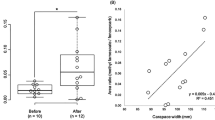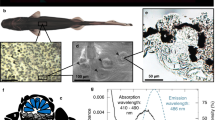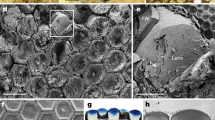Abstract
THE amino acid compositions of two peptide hormones, both acting on the pigmentary-effector system of crustaceans, have been reported1. One of these, erythrophore concentrating hormone (ECH) has a major function in the rapid physiological colour changes of crustaceans, by concentrating pigment granules of the erythrophores, and is the first crustacean eyestalk hormone described2. The second eyestalk hormone, discovered not long afterwards3, moves the distal (DRP) and reflecting retinal pigments of dark-adapted Palaemonetes and Palaemon into the light-adapted position, but purified hormone has so far been tested on only the DRP. A third well characterised hormone, hyperglycaemic hormone (HGH), increases glucose concentration of the blood, but such hyperglycaemic responses may vary in cross tests among crustacean species4–6. The amino acid composition of HGH has been determined. A summary of six analyses of five different preparations of HGH from eyestalks of Cancer magister is shown in Table 1; specific analyses for tryptophan have not been made. Details of the separation and purification will be reported elsewhere.
This is a preview of subscription content, access via your institution
Access options
Subscribe to this journal
Receive 51 print issues and online access
$199.00 per year
only $3.90 per issue
Buy this article
- Purchase on Springer Link
- Instant access to full article PDF
Prices may be subject to local taxes which are calculated during checkout
Similar content being viewed by others
References
Fernlund, P., Biochem. biophys. Acta, 237, 519–529 (1971); 371, 304–311 (1974); 371, 312–322 (1974).
Perkins, E. B., J. exp. Zool., 50, 71–105 (1928).
Kleinholz, L. H., Biol. Bull., 70, 159–184 (1936).
Kleinholz, J. H., Kimball, F., and McGarvey, M., Gen. comp. Endocrinol., 8, 75–81 (1967).
Keller, R., Z. vergl. Physiol., 63, 137–145 (1969).
Kleinholz, L. H., and Keller, R., Gen. comp. Endocrinol., 21, 554–564 (1973).
Charniaux-Cotton, H., and Kleinholz, L. H., in The Hormones, 4 (edit. by Pincus, G., Thimann, K. V., and Astwood, E. B.), 135–198 (1964).
Barrington, E. J. W., in The Hormones, 4 (edit. by Pincus, G., Thimann, K. V., and Astwood, E. B.), 299–363 (1964).
Fingerman, M., Scientia, 105, 1–23 (1970).
Fingerman, M., Gen. comp. Endocrinol., 20, 589–592 (1973).
Josefsson, L., Gen. comp. Endocrinol., 25, 199–202 (1975).
Hogben, L., and Slome, D., Proc. R. Soc., B 108, 10–53 (1931).
Kleinholz, L. H., and Kimball, F., Gen. comp. Endocrinol., 5, 336–341 (1965).
Kleinholz, L. H., Gen. comp. Endocrinol., 14, 578–588 (1970).
Pantin, C. F. A., J. exp. Biol., 11, 11–27 (1934).
Wang, D. H., and Scheer, B. T., Comp. Biochem. Physiol., 9, 263–274 (1963).
Keller, R., Z. vergl. Physiol., 51, 49–59 (1965).
Keller, R., Verh. dt. zool. Ges. 272–279 (1966).
Author information
Authors and Affiliations
Rights and permissions
About this article
Cite this article
KLEINHOLZ, L. Purified hormones from the crustacean eyestalk and their physiological specificity. Nature 258, 256–257 (1975). https://doi.org/10.1038/258256a0
Received:
Accepted:
Issue Date:
DOI: https://doi.org/10.1038/258256a0
This article is cited by
-
Deep sequencing of microRNAs reveals circadian-dependent microRNA expression in the eyestalks of the Chinese mitten crab Eriocheir sinensis
Scientific Reports (2023)
-
Crustacean neuropeptides
Cellular and Molecular Life Sciences (2010)
-
Differential distribution of ?-pigment-dispersing hormone (?-PDH)-like immunoreactivity in the stomatogastric nervous system of five species of decapod crustaceans
Cell and Tissue Research (1991)
-
Isolation of neurosecretory hyperglycemic hormone from the eyestalks of freshwater crab,Barytelphusa cunicularis
Proceedings: Animal Sciences (1989)
-
Biosynthesis and axonal transport of proteins and identified peptide hormones in the X-organ sinus gland neurosecretory system
Journal of Comparative Physiology ? B (1983)
Comments
By submitting a comment you agree to abide by our Terms and Community Guidelines. If you find something abusive or that does not comply with our terms or guidelines please flag it as inappropriate.



